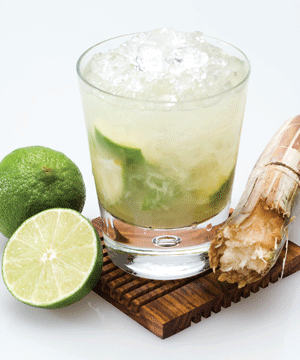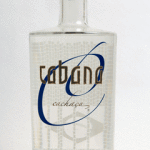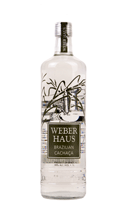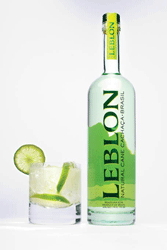text ©2008

France has cognac, Scotland has scotch, Peru and Chile claim pisco as their national spirit, and yet until recently few of us in the United States had heard of cachaça, Brazil’s spirit of choice. With the caipirinha craze, as well as the opening of Brazilian restaurants around the U.S., cachaça (pronounced kah-sha´-sa) has become a hot ticket.
Brazilians consume an enormous quantity of the stuff (396 million gallons, or about eight litres per capita annually). I’m assuming this figure does not include ethanol production from sugar cane, which fuels Brazilian autos, though people have been known to stop at the gas station to pick up a liter or two on the way to a party (you really can drink it).
There are more than 4,000 brands of cachaça sold in Brazil, where bars specializing in cachaça are calledcachaçarias. Most of them are rather harsh industrial versions distilled in continuous column stills and sold in bulk. Cachaça remained the drink of the lower classes until a few artisan distillers started producing cachaça in copper alambic pot stills. These high-end cachaças have caught the attention of connoisseurs around the world.

Yet even now, less than 2% is exported. Just over a dozen are exported to the U.S. and they’re making a big splash on the coattails of the caipirinha craze. This July Weber Haus Silver Cachaça was awarded Best of Show White Spirit at the prestigious San Francisco World Spirits Competition. That same month Cabana Cachaça was awarded a gold medal at The Ministry of Rum Tasting Competition in New Orleans. The Beverage Testing Institute in Chicago recently awarded Sagatiba Velha a score of 93 and Sagatiba Preciosa (a super premium lot of cachaça aged 23 years in oak) a platinum medal and a rare score of 96.

There is some confusion as to what differentiates aguardente, rum and cachaça, because all can be derived from sugar cane, and some rum, as well as some aguardente, is made from sugar cane. However, aguardente (which means “firewater”) can also be distilled from other grains, fruits and vegetables. Rum is usually distilled from molasses, a by-product of sugar production (from either sugar cane or sugar beets). Rum can also be produced from fresh pressed sugar cane, so you might say that all cachaça is rum, but not all rum is cachaça. What makes cachaça unique is that first and foremost if it’s called cachaça it can only be made in Brazil, and it must be made from fresh cane, pressed within 24 hours of cutting. Organoleptically, what sets it apart from rum are the subtle herbal notes you get from cane juice. Each cachaça I’ve tasted has subtle and very real differences that are not unlike the background flavors you find in tequila. Other writers have described these flavors as herbal. I find that green grass and chili pepper notes are also common. Some cachaças emphasize this flavor (e.g. Weber Haus), while others aim for more subtlty (e.g. Cabana). Whatever your preference, you’re sure to find a brand that matches your taste.
Additionally, there are sub-divisions within the cachaça category. Chachaça adoçada (sweet cachaça) contains between 6 and 30 grams of sugar per liter. Cachaça envelhecida refers to cachaça aged in wood. There are two types of aged cachaça: premium and extra premium. For the premium, at least 50% must be aged at least one year in 700 liter wooden barrels. The extra premium must be aged at least three years. There are more than a dozen different types of wood used for aging cachaça, among them chestnut, almond, cherry, brazilwood, balsam, jequitabá and oak, so aged cachaça may display additional flavors that derive from the type of wood in which it’s aged.
RECOMMENDED CACHAÇAS

A tasting of even a few cachaças side-by-side will convince you of the individual qualities of each brand.
WEBER HAUS
Weber Haus has produces several different versions. Weber Haus Silver won the Best of Show White Spirit at The San Francisco International Spirits Competition. Of all the cachaças I’ve tasted, this one displays the strongest peppery qualities. You’ll notice chipotle-like (smokey) notes, along with the scent of fresh cut poblanos.
LEBLON
A step down in herbal intensity is Leblon. It has green grass and chili character with a hint of mint.
CABANA
Cabana Cachaça was founded by Matti Anttila, a Santa Barbara native who first traveled to Brazil as an investment banker for J.P. Morgan, and came away with an appreciation for cachaça. Cabana, which was introduced in 2006, is double distilled for extra smoothness, and aged in jequitabá wood for six months. It has a green grass-flowery aroma, slightly more herbal with honey notes on the mid-palate and a warm finish.
SAGATIBA
Sagatiba puts out several different kinds of cachaça. The Pura is not aged in wood and is be closer in flavor to those mentioned above. The VELHA is aged in oak and has a mellower flavor. I’d be more inclined to sip Velha and use Pura in mixed drinks.
THE CAIPIRINHA
The popularity of cachaça is linked inextricably with the caipirinha craze. While mixologists around the world are coming up with dozens of concoctions using cachaça as the base, the caipirinha is the national cocktail of Brazil. It’s basically just a daiquiri made with cachaça:
2 oz of cachaça
1 T granulated sugar
1 lime
splash of club soda
A typical recipe will tell you to muddle one quartered lime and the sugar, add the cachaça, stir and top with a splash of club soda. And most people will have it on the rocks. I prefer to muddle the lime and sugar in the glass, transfer the contents to a shaker, add crushed ice and cachaça, and shake until well-chilled. Pour back into the glass, and top with a splash of soda. I don’t know why, but I find the flavors are brighter when it’s shaken, and best when served ice cold but without the ice (or just a little crushed ice floating on the top).
& & &
